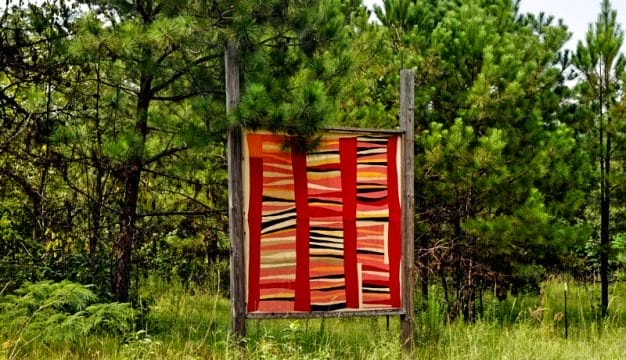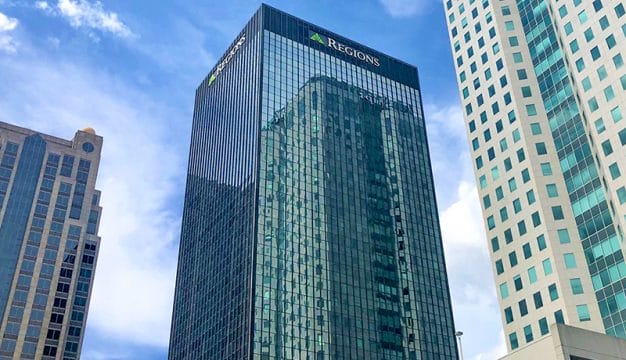Kymulga Grist Mill, Park, and Covered Bridge
 Kymulga Grist Mill
Kymulga Grist Mill, Park, and Covered Bridge is a historic complex located in the unincorporated community of Alpine, Talladega County, five miles northeast of Childersburg. The park interprets nineteenth-century life and small-scale industry in Alabama. The property, which includes the mill and associated wooden dam, a covered bridge, and nature trails, is owned by the city of Childersburg and managed by the Childersburg Historical Preservation Commission. It is the only such site in the state with a mill and bridge still in their original locations. Both structures were listed on the National Register of Historic Places (NRHP) in 1976.
Kymulga Grist Mill
Kymulga Grist Mill, Park, and Covered Bridge is a historic complex located in the unincorporated community of Alpine, Talladega County, five miles northeast of Childersburg. The park interprets nineteenth-century life and small-scale industry in Alabama. The property, which includes the mill and associated wooden dam, a covered bridge, and nature trails, is owned by the city of Childersburg and managed by the Childersburg Historical Preservation Commission. It is the only such site in the state with a mill and bridge still in their original locations. Both structures were listed on the National Register of Historic Places (NRHP) in 1976.
The five-acre property upon which the park sits was originally purchased by merchant George Hoke Forney (1835-1864), a brother of Alabama representative William Henry Forney (1823-1894). Forney joined the Calhoun Light Infantry, a local militia, at the outbreak of the Civil War. When the unit was mustered into the Confederate Army as part of the 2nd Alabama Infantry, Forney was elected lieutenant and promoted to the rank of major in 1862. He was one of four brothers in his family to serve, including William. Sometime in early 1864, Forney contracted with German builder G. E. Morris to build a grist mill on the property. It was completed, largely by a team of enslaved workers leased by Morris to work on the project, after Forney’s death on May 5, 1864, in the Battle of the Wilderness in Virginia. The workers also dug a canal, by hand, to divert water to operate the mill’s turbines and built the wooden dam, which rises seven feet from the bottom of the creek and creates the mill pond for submerging the turbines.
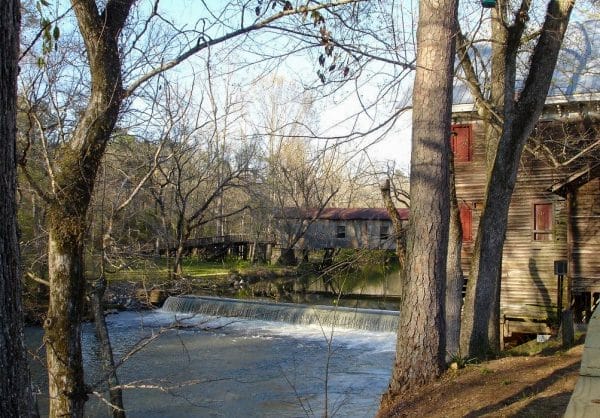 Creek View of Kymulga Park
The mill is significant because many such structures, along with numerous other industrial and manufacturing sites, were burned by Union raiders during the war. It is one of only a few to survive. The mill changed hands several times, all the while continuing to operate, until 1977, when it was left abandoned. The Childersburg Heritage Committee (now the Childersburg Historical Preservation Commission) purchased the building in 1988 and continued to operate it as a functioning mill, and it became the centerpiece of what was then called Kymulga Park. The city of Childersburg purchased the site in June 2011 and retained the commission as the managing body. The commission also operates the Butler-Harris Rainwater Museum, a historic house museum located in Childersburg. In 2012, the mill was almost destroyed when floods washed out part of its foundation, but the commission was able to upgrade the foundation with steel beams through donations totaling more than $250,000.
Creek View of Kymulga Park
The mill is significant because many such structures, along with numerous other industrial and manufacturing sites, were burned by Union raiders during the war. It is one of only a few to survive. The mill changed hands several times, all the while continuing to operate, until 1977, when it was left abandoned. The Childersburg Heritage Committee (now the Childersburg Historical Preservation Commission) purchased the building in 1988 and continued to operate it as a functioning mill, and it became the centerpiece of what was then called Kymulga Park. The city of Childersburg purchased the site in June 2011 and retained the commission as the managing body. The commission also operates the Butler-Harris Rainwater Museum, a historic house museum located in Childersburg. In 2012, the mill was almost destroyed when floods washed out part of its foundation, but the commission was able to upgrade the foundation with steel beams through donations totaling more than $250,000.
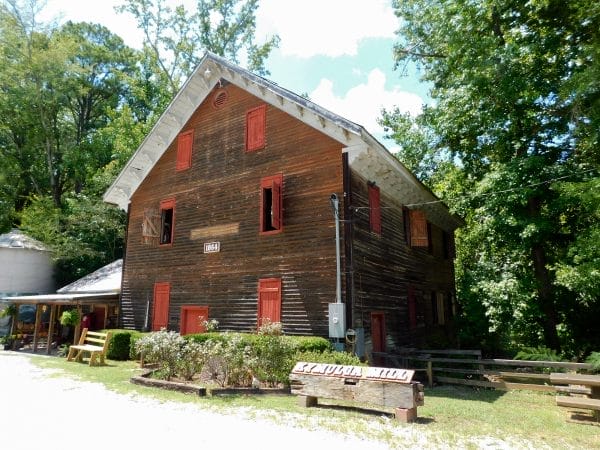 Kymulga Grist Mill
The mill is a three-story post-and-beam building set on rock pilings on the eastern side of Talladega Creek. It would have originally had a shingle roof but now has a tin roof. The creek side of the building has a lower floor that houses the structure’s three turbines. The attached one-story mill office, now the park office and gift shop, and grain silo are preserved at the site as well. Unlike most mills in the area, the Kymulga mill was highly automated. Grain would have arrived at the mill by a rail spur that once ran to the structure and was then lifted to the top floor via a system of mechanized buckets. It then was routed into chutes that took it to the millstones on the second and first floor. The turbines also powered lighting for a time until the mill was electrified in the 1920s. The milling system today is fully electric and mechanized.
Kymulga Grist Mill
The mill is a three-story post-and-beam building set on rock pilings on the eastern side of Talladega Creek. It would have originally had a shingle roof but now has a tin roof. The creek side of the building has a lower floor that houses the structure’s three turbines. The attached one-story mill office, now the park office and gift shop, and grain silo are preserved at the site as well. Unlike most mills in the area, the Kymulga mill was highly automated. Grain would have arrived at the mill by a rail spur that once ran to the structure and was then lifted to the top floor via a system of mechanized buckets. It then was routed into chutes that took it to the millstones on the second and first floor. The turbines also powered lighting for a time until the mill was electrified in the 1920s. The milling system today is fully electric and mechanized.
At its height, the large commercial mill operated five sets of grinding stones, two sets of which are French buhrstones. This type of millstone, made from limestone featuring many pits left behind by fossilized molluscs and other small invertebrates, was highly sought after because it is very hard and durable and because the numerous pits in the grinding surface allows for the production of very fine flour. Millstones can be set to produce varying sizes of flour, and those on the second floor were typically set for courser products such as grits and cornmeal. If finer flour was desired, the grain was then sent to the next set of millstones, which were set closer together to grind the larger particles even smaller. When completed, it was packed in burlap sacks for shipping by railroad.
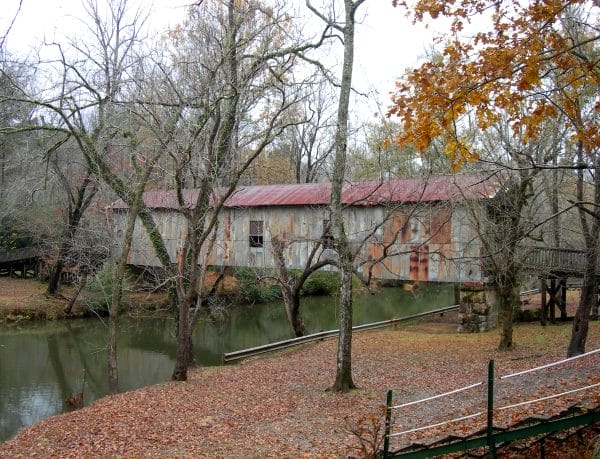 Kymulga Covered Bridge
The construction date for the covered bridge is unclear, but it was likely completed around 1861, prior to the construction of the mill. The bridge was constructed to allow passage over the creek for the Old Georgia Road, also known as the McIntosh Road (named for Creek leader William McIntosh), and homesteads soon proliferated in the area. Forney, who lived in Jacksonville, Calhoun County, likely purchased the property and built the mill as a business opportunity in the expanding community. In 1940, the federal government bought up much of the land in the area and established the Alabama Ordnance Works as part of the World War II defense effort, and most of the local buildings that once surrounded the property were bulldozed. No longer used for transportation, the bridge now leads to a network of nature trails, some of which traverse or cross remnants of the Old Georgia Road.
Kymulga Covered Bridge
The construction date for the covered bridge is unclear, but it was likely completed around 1861, prior to the construction of the mill. The bridge was constructed to allow passage over the creek for the Old Georgia Road, also known as the McIntosh Road (named for Creek leader William McIntosh), and homesteads soon proliferated in the area. Forney, who lived in Jacksonville, Calhoun County, likely purchased the property and built the mill as a business opportunity in the expanding community. In 1940, the federal government bought up much of the land in the area and established the Alabama Ordnance Works as part of the World War II defense effort, and most of the local buildings that once surrounded the property were bulldozed. No longer used for transportation, the bridge now leads to a network of nature trails, some of which traverse or cross remnants of the Old Georgia Road.
The park offers historic demonstrations and other educational programming about early cultural and industrial life in the state as well as archaeological presentations. Each year, the park hosts its annual “Christmas on the Creek” holiday festival, a Halloween party, an art show, and live music events. It is also available for rent for weddings and other special events.
Further Reading
- Boyd, Ken. “Kymulga Grist Mill: An Operating Mid-Nineteenth Century Alabama Watermill.” Alabama Heritage 138 (Fall 2020): 32-43.


